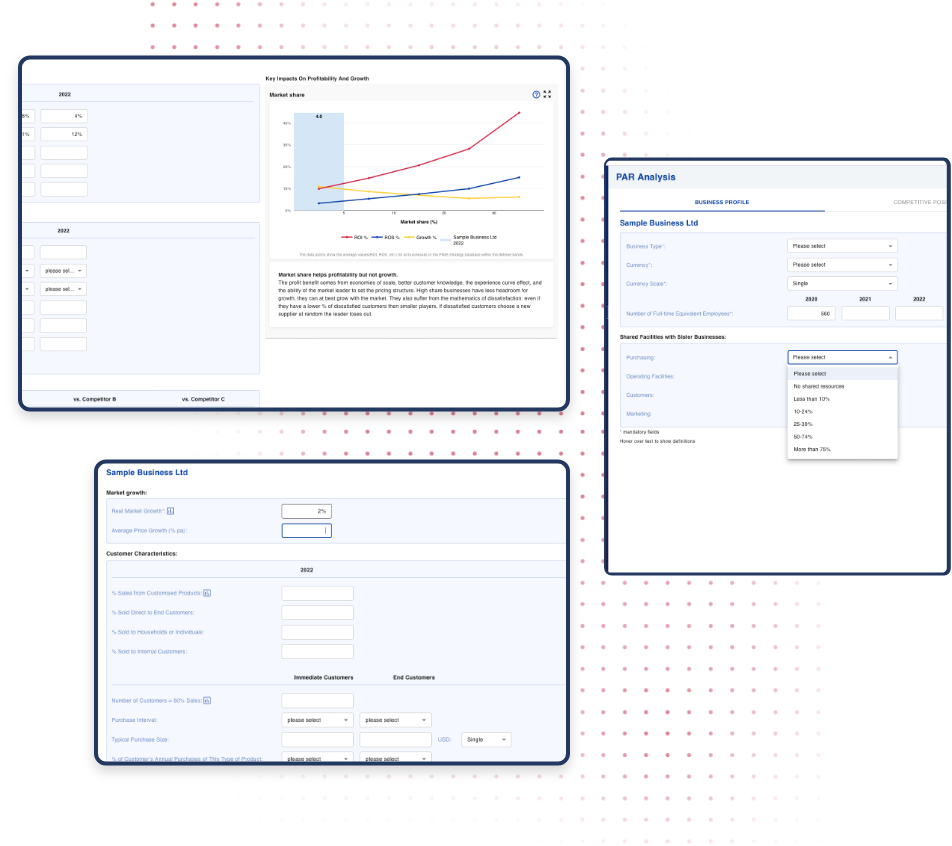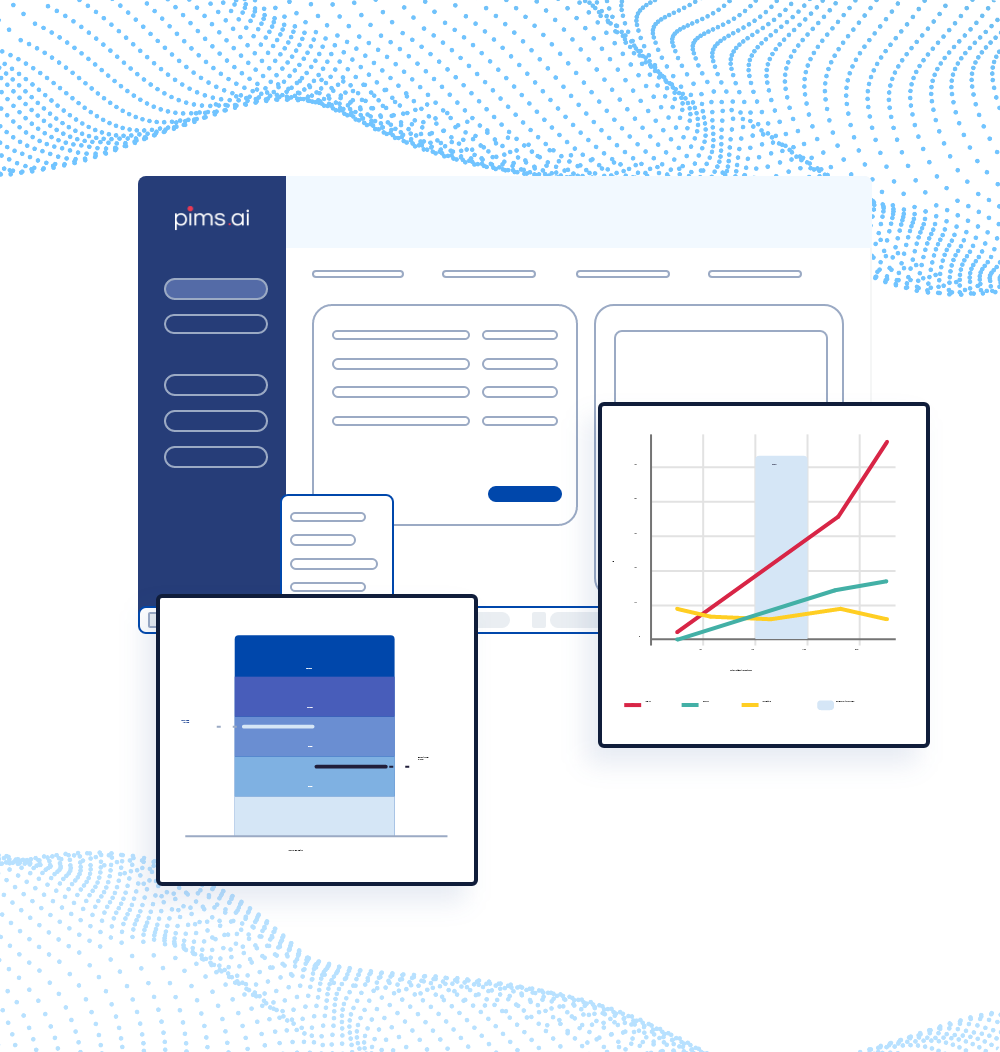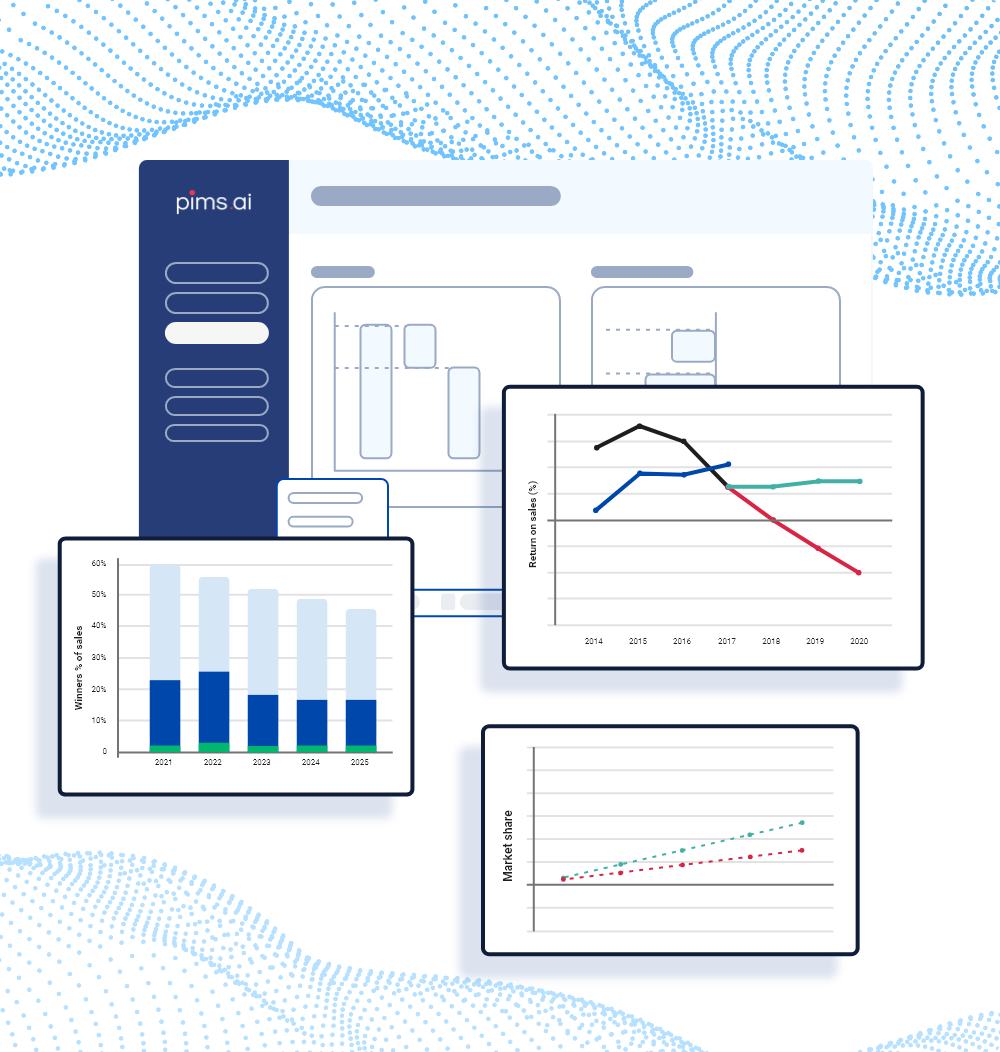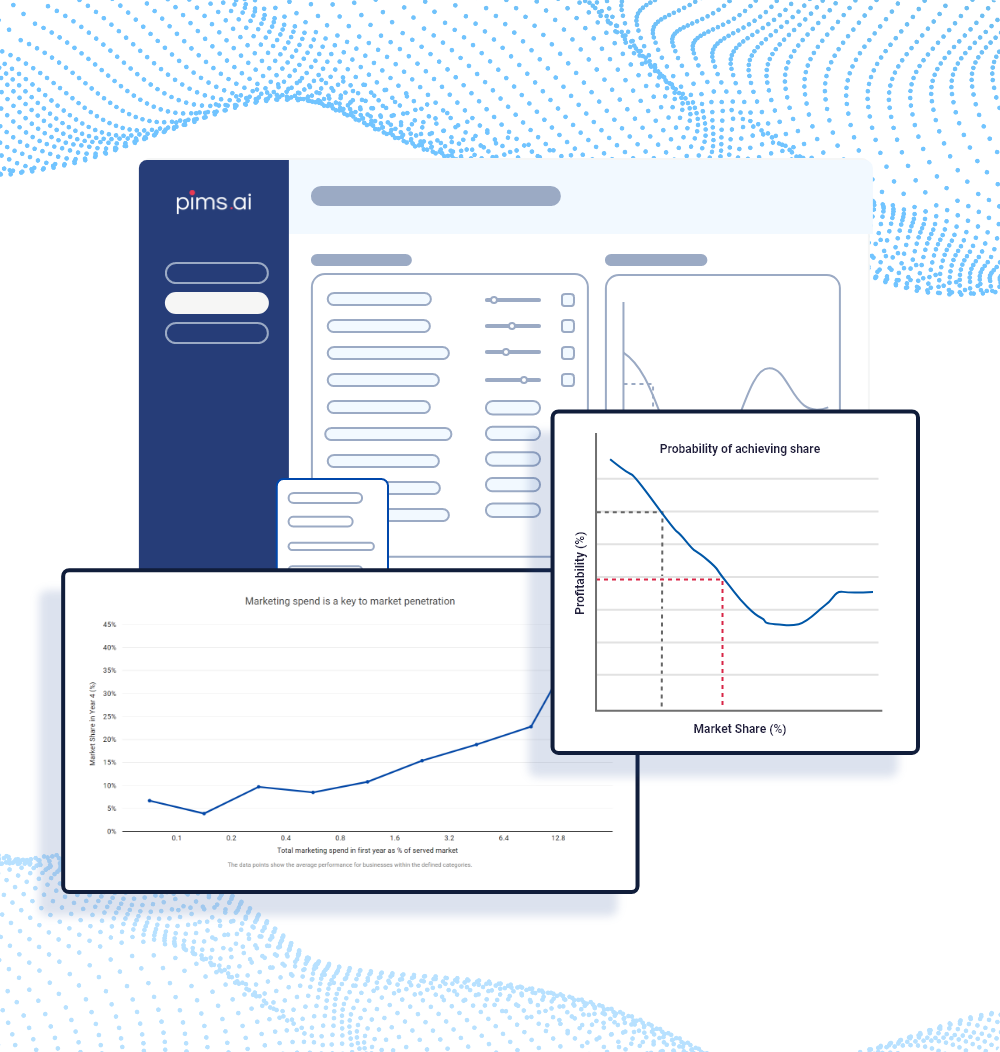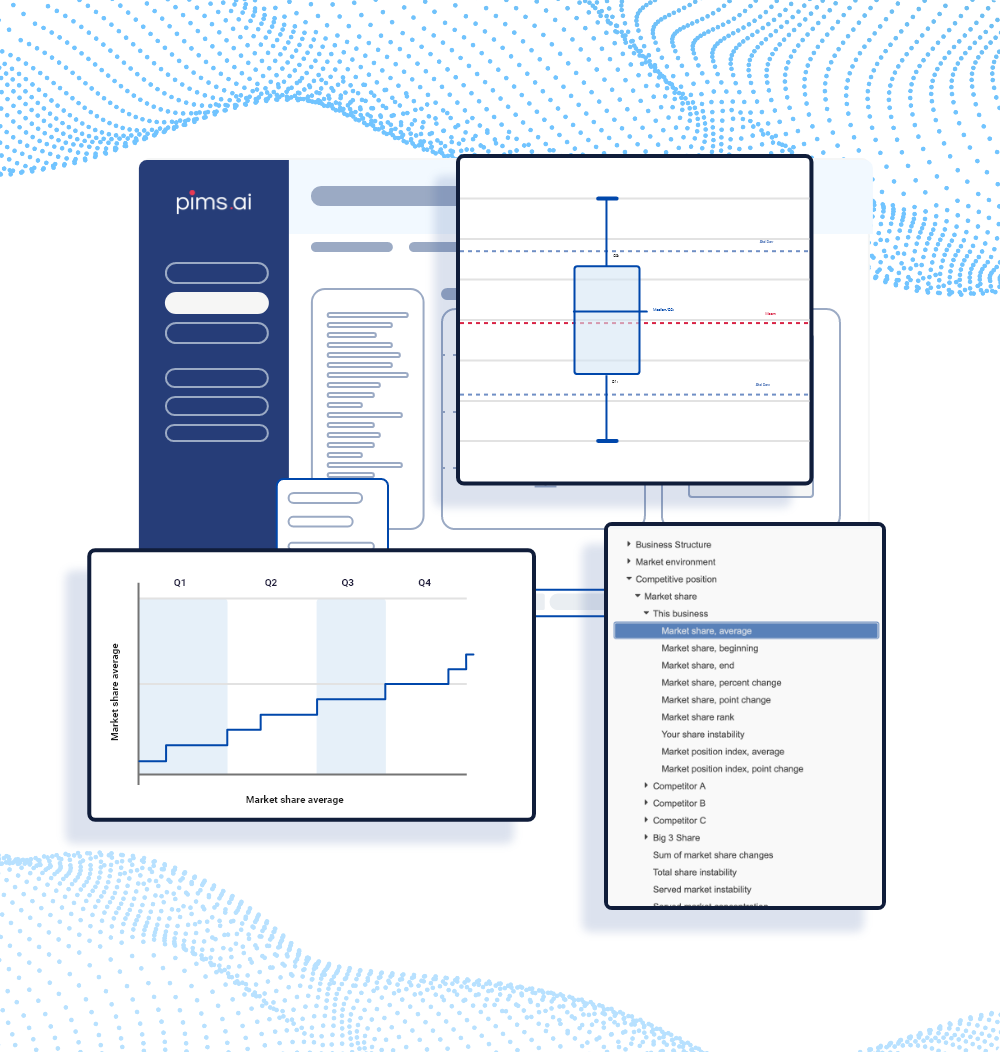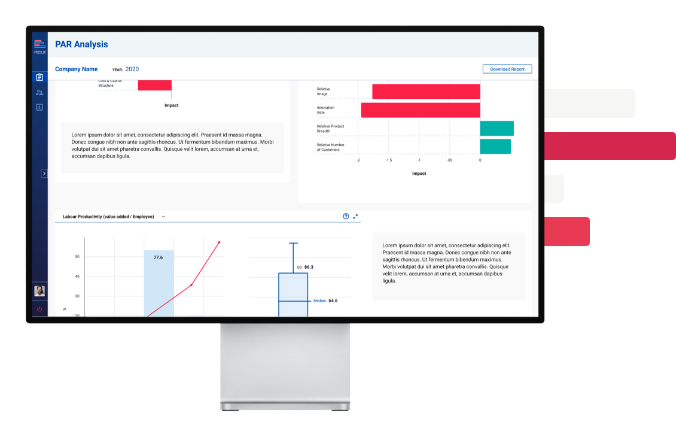
Over 25′000 years of business experience.
The PIMS® database contains over 25’000 years of business experience at the Strategic Business Unit (SBU) level (i.e. where the customer interface takes place and where marketing and investment decisions are made). Each SBU is characterized by 500 factors over a period of 3+ years. The companies in the PIMS® database contribute financial data as well as information on customers, markets, competitors, and operations on their companies at the SBU level.
The SBUs in the database are separated into different classifications, specific companies and industries are not identified. Each SBU profile includes financial data from the income statement and balance sheet, as well as information about quality, price, new products, market share, and competitive tactics.
The choice is yours: PIMS® SaaS or PIMS® Consulting.
Take the power of the PIMS® database into your own hands with the PIMS® software solutions (PIMSSaaS), or leverage our expert consultants by opting for PIMS® as a consulting project.
Use cases.
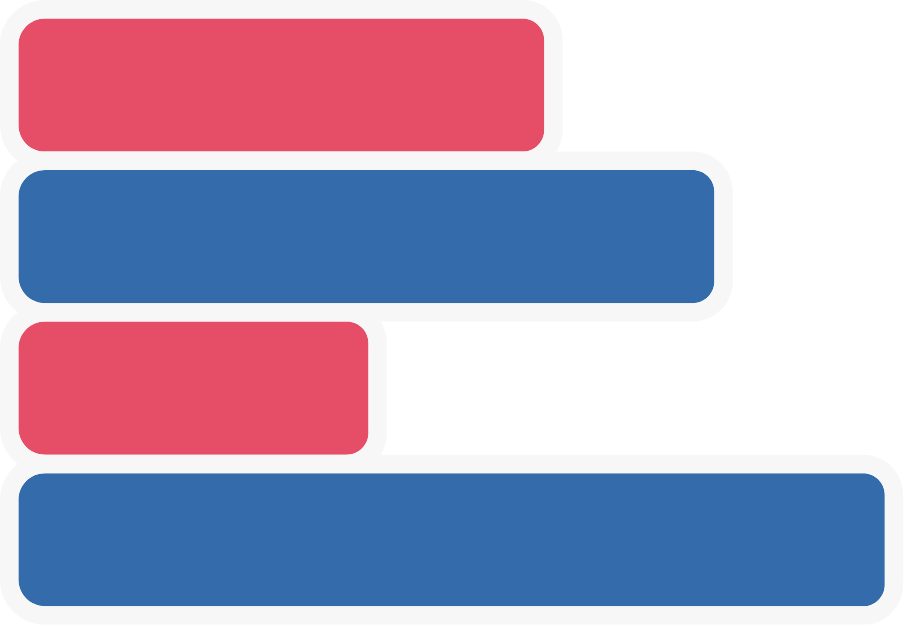
PIMS contains the insights and evidence which are invaluable for companies that are restructuring to maintain their vitality and market competitiveness. PIMS contains empirical data that shows the strategic reasons why winning businesses win and losers lose.
Thanks to PIMS, for the first time we have a clear picture of our perceived value position relative to our closest competitors, our core strengths and key improvement areas. This will enable us to better align our offering with the customer needs.
The PIMS Principles puts into a coherent context a unique set of guidelines that have proven to be extremely valuable in the management of businesses across a wide spectrum of industries.
